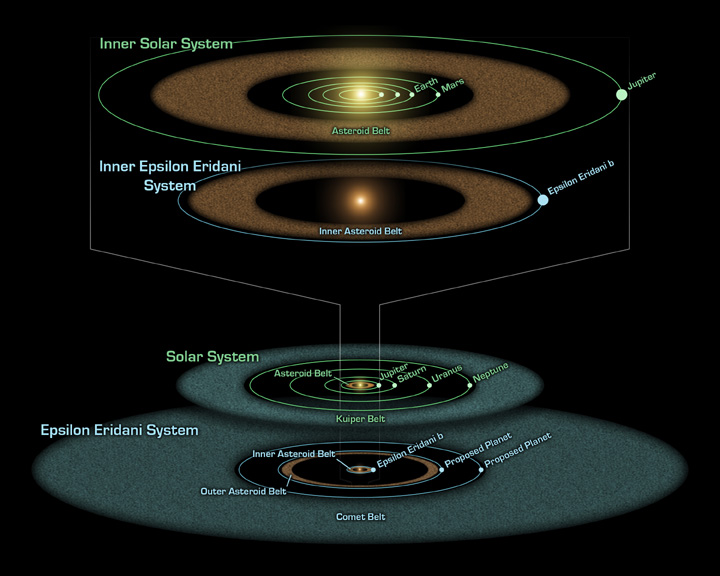Image List
-

This artist's diagram compares the Epsilon Eridani system to our own solar system. The two systems are structured similarly, and both host asteroids (brown), comets (blue) and planets (white dots). Epsilon Eridani's inner asteroid belt is located at about the same position as ours, approximately three astronomical units from its star (an astronomical unit is the distance between Earth and the sun.). The system's second, denser belt lies at about the same place where Uranus orbits in our solar system, or 20 astronomical units from the star. Epsilon Eridani is thought to have planets orbiting near the rims of its two belts. The first of these planets was identified in 2000 via the radial velocity technique. The second planet orbiting near the rim of the outer asteroid belt at 20 astronomical units was inferred when Spitzer discovered the belt. A third planet might orbit in Epsilon Eridani at the inner edge of its outermost comet ring, which lies between 35 and 90 astronomical units. This planet was first hinted at in 1998 due to observed lumpiness in the comet ring.
NASA/JPL-Caltech -

This artist's conception shows the closest known planetary system to our own, called Epsilon Eridani. Observations from NASA's Spitzer Space Telescope show that the system hosts two asteroid belts, in addition to previously identified candidate planets and an outer comet ring. The system's inner asteroid belt appears as the yellowish ring around the star, while the outer asteroid belt is in the foreground. The outermost comet ring is too far out to be seen in this view, but comets originating from it are shown in the upper right corner.
NASA/JPL-Caltech